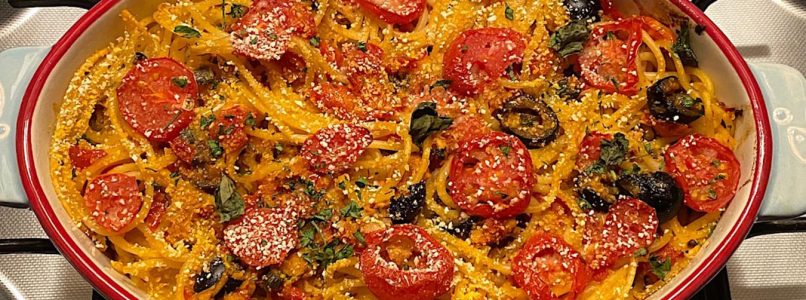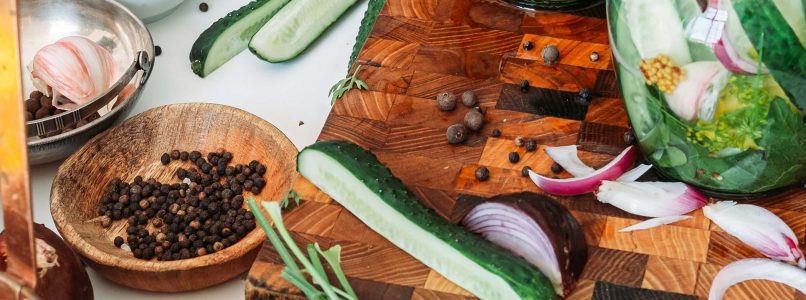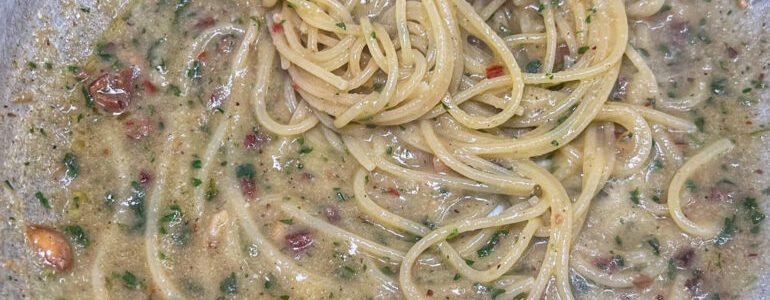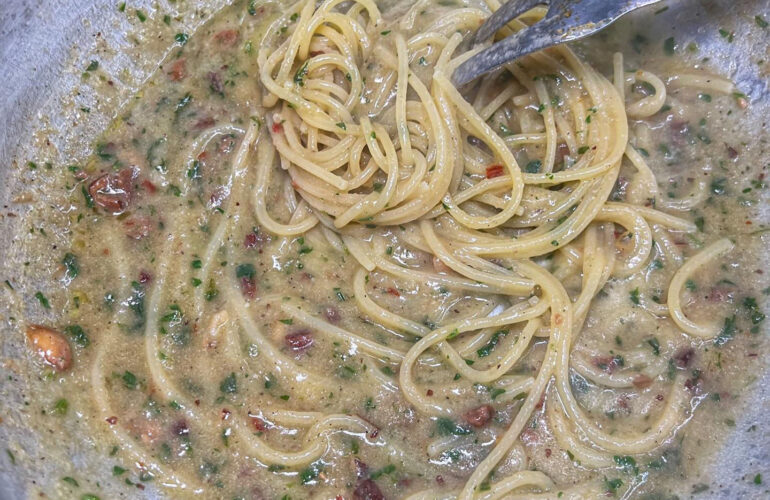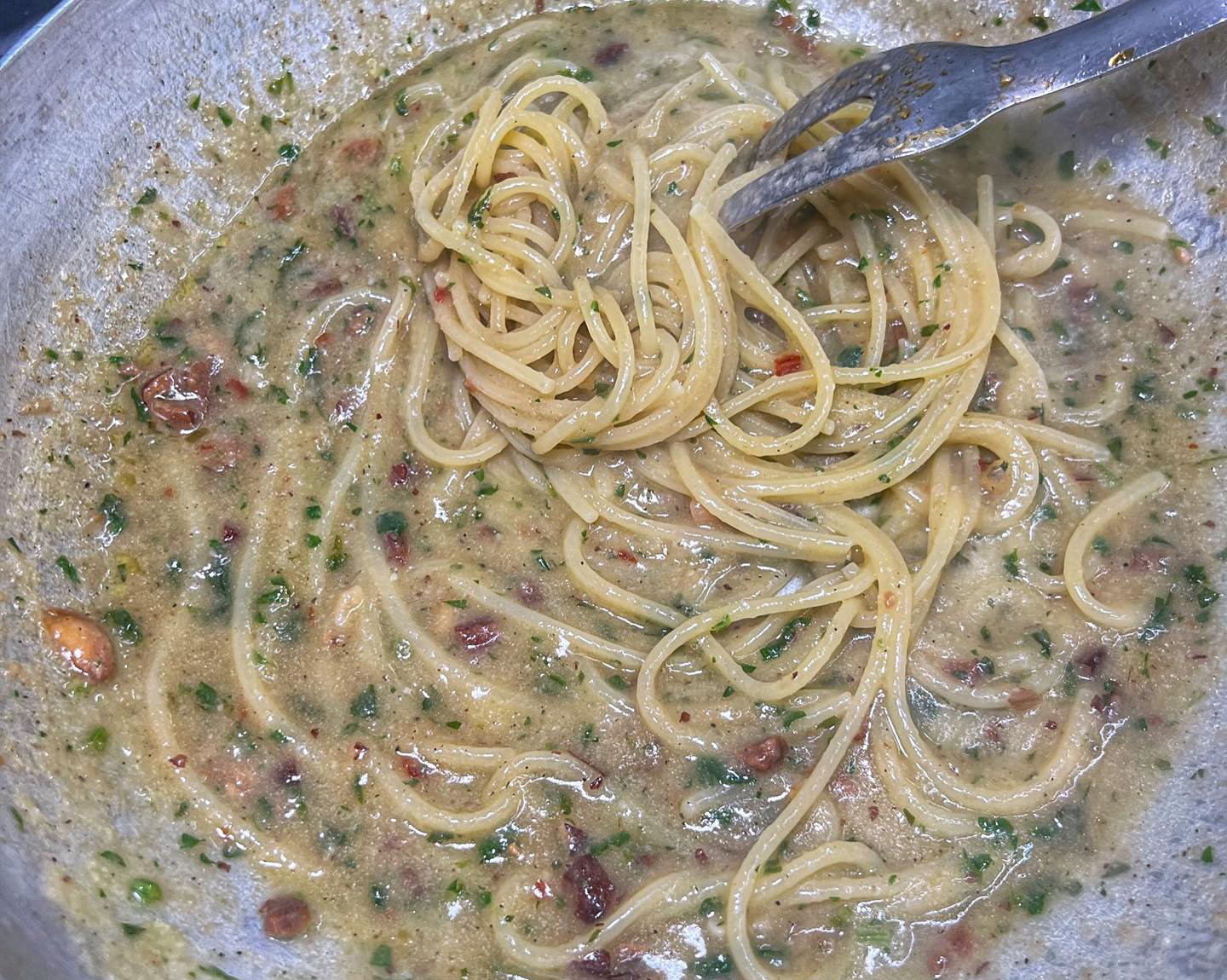The Spaghetti Tuna and tomato in the oven they are a chef’s recipe Piero Benigni. This simple dish is a riot of flavors and aromas that come together during the time in the oven to offer an exciting final result that you will always make like this. It can be prepared in about an hour and is always loved. It can be prepared well in advance and put in the oven before the meal, thus leaving hands and space free for other tasks. Prepare it in a large pan the seasoning and when they are cooked, add the spaghetti boiled separately. Mix well and place in the baking dish to finish cooking in the oven. I really love alternative cooking methods, including those in the oven like this one, which I also prepare using raw pasta. They are interesting, fun and out of the ordinary.
Spaghetti Tuna and tomato in the oven
Ingredients for 2 people
• 160 g spaghetti
• 300 g tomatoes (well ripe)
• 80 g onion
• 1 tablespoon capers (heaped)
• 12 olives (to taste)
• 2 anchovies in oil (4 fillets)
• 80 g tuna (drained weight)
• 1 sprig of parsley
• 8 basil leaves
• to taste hot chilli pepper (to taste)
• 2 cloves of garlic
• 3 tablespoons olive oil
• 2 tablespoons breadcrumbs
Preparation
The dish you see is made with good, ripe tomatoes. Out of season I recommend preparing it with a 400g box of good peeled tomatoes, removing the sauce that accompanies them for other uses. Open them, remove the seeds and internal core if present, cut them into pieces and use them as explained later. You can use salted or pickled capers, which will need to be quickly washed under running water. The tuna, natural or in oil of your choice, must be around 80 g in drained weight. It’s good to use one large pan with high sides, which will be useful for adding the spaghetti and mixing everything well. The baking dish you see is oval, 23 cm long inside and 5 cm high. The pasta shape can obviously be different, both long and short: in this case I always put spaghetti, which is the backbone of our cuisine. Let’s see how to proceed:
Peel the tomatoes then eliminating the peel and seeds as much as possible tear them to pieces. Leave the slices that will be used for the final decoration of the dish before putting it in the oven. Chop parsley and basil. Wash the capers and if they are large ones chop them roughly. Pitted the olives if necessary and cut them into 2 or 3 pieces each. Chop garlic and onion and put them in a pan with 2 tablespoons of olive oil. Brown them for 5 minutes, then add the chilli pepper, half the chopped parsley and basil, the 4 anchovy fillets chopped meats, capers, olives and tomatoes. Mix well and cook gently for 4-5 minutes, then add the drained and crumbled tuna. Continue but as soon as the tomatoes are tender, turn off the heat and wait for the pasta to be ready. Don’t overcook them.
Drain the spaghetti very al dente and pass them in the pan. Turn the heat back on and mix well for a couple of minutes, adding the rest chopped parsley And basil. Grease the bottom of the baking dish with a little olive oil and put what is in the pan. Arrange the tomato slices on top and sprinkle a couple of spoonfuls of breadcrumbs. At this point you can also wait to put it in the oven, let’s say a couple of hours at most. Put in static oven at 200 °C, heat above and below, mid-height position. Cook for 20 minutes or until the top appears slightly gratinated. If this is delayed, turn on the ventilation or move the baking dish one position higher.
The dish can be enjoyed hot or warm, and in summer even at room temperature. It is preserved a couple of days in the refrigerator and it is delicious reheated in a pan. It can be frozen, with a shelf life of 3 months in the freezer.
